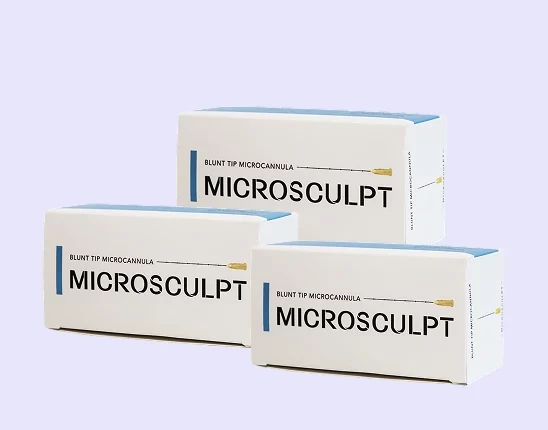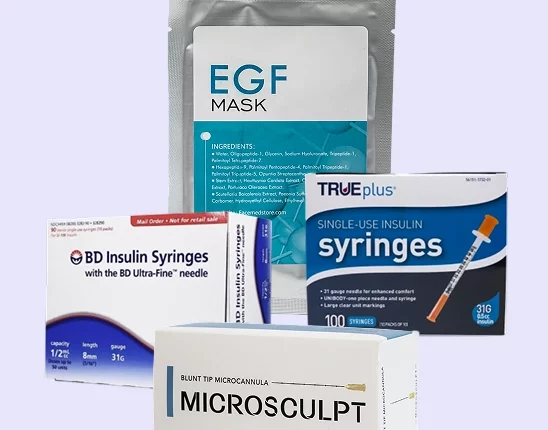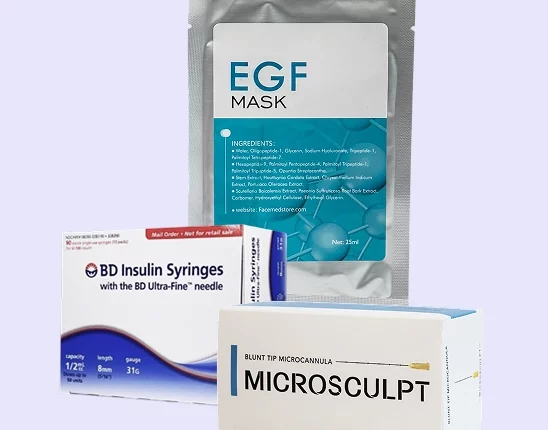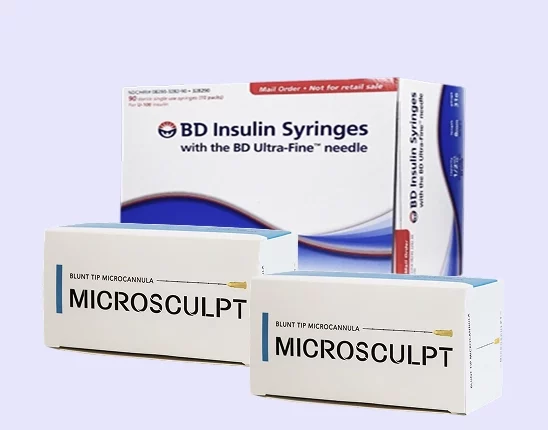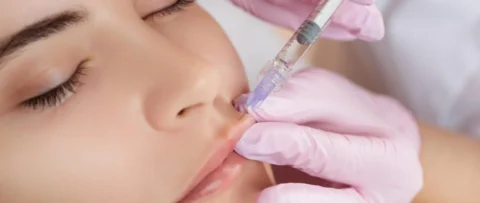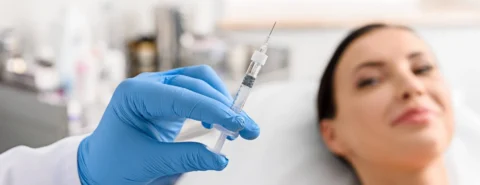Dermal fillers are a minimally invasive cosmetic procedure, but they aren’t free from any side effects. Bruising, tenderness, and uneven results are just some common complaints that patients report with these procedures. One significant factor that can cause or prevent these issues is the type of needle used. either a blunt tip cannula or a sharp tip needle.
So which side should you take in the cannula vs. needle debate? There are convincing arguments for either side, which we’ll explore in further detail.
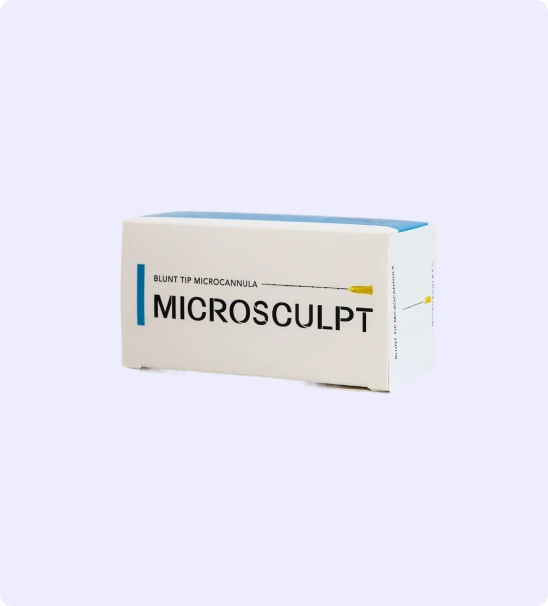
INJECTIONS YOUR PATIENTS WILL LOVE! CODE “20OFF” TAKES 20% OFF YOUR FIRST ORDER!
Microcannulas are a tool that every great injector must master. Patients want quick results with no downtime. Our microcannulas are high quality and a fraction of the price of our competitors!
You can create an account here.
Needle vs Cannula: Which Is Better?
The choice of using a needle of a cannula will ultimately depend on the surgeon. With enough training, experience, and knowledge of facial anatomy, they can compensate for the different requirements of handling both tools.
That aside, there are specific situations that are more conducive for each tool:
1. Intensive Filler Sessions Over Long Periods Of Time: Cannulas
Because of their unique structure compared to sharp-tip needles, cannulas are preferable for wide treatment areas that need many sessions to fill. Cannulas are more maneuverable around delicate areas of the skin, have higher accuracy with dermal sites, and allow for a continuous flow of filler towards the site.
2. Short Filler Sessions On Small Areas Of The Skin: Needles
Sharp tip needles are still the tool of choice for many aestheticians since they’re more precise and readily available. For localized filler sites or quick touch-ups, needles are still a practical and convenient option. Precision work like filling in acne scars are easier with a sharp-tip needle because of the small amount of filler required.
Here is a table that compares the structure of cannulas vs needles:
| Cannula | Needle | |
| Tip design | Blunt | Pointed |
| Length | Generally longer | Generally shorter |
| Tubing | Always flexible | Rigid (though some flexible variants exist) |
| Entry points (incisions) | One or two (at most) | Multiple |
| Force required for dermal entry | Mild | Moderate |
| Downtime post-procedure | Short | Long |
Patient preference also plays a crucial role in determining which is the “better” tool to use. Patients who are used to injectable fillers or who have a high pain threshold accept needle treatments. Inexperienced patients or ones with lower pain thresholds will often opt for cannula treatments.
A Brief Guide To Sharp Tip Needles
Sharp tip needles are used on almost all dermal filler sites. Before using cannulas became popular, sharp tip needles were the only way to apply dermal filler reliably. Most schools of dermatology still rely heavily on needles as a standard, and as a result, they’re more widely available than cannulas.
You should use a sharp-tip needle if:
- Deeper-level dermal fill placement is required
- The filler itself is more viscous
- You don’t need to use a lot of filler
- The patient is fine with post-operative swelling/bruising
- You need better control over how much filler you want to place
The advantage of using a sharp-tip needle is that it’s more precise. Surgeons who need to put dermal filler close to the bone or doing facial sculpting may find the needle easier to use. It’s also a relatively straightforward process to apply filler using a needle since you go straight to the injection site.
The risk of using a sharp-tip needle is that the patient is more likely to experience operative trauma. Since needles penetrate the skin layer, there’s a high likelihood that it’ll puncture any blood vessels they encounter. This increases the risk of intravascular injection.
Needles will also puncture arterial walls, which can make injecting near delicate areas difficult. Aestheticians are advised to avoid areas with thin skin or if the patient finds the procedure painful. Any disruptions in blood flow because of a punctured artery can range from mild symptoms like bruising to severe complications like arterial/venous occlusion (tissue necrosis).
A Brief Guide To Cannulas
Cannulas were developed as an alternative to needle fillers, specifically addressing the drawbacks of post-operative trauma from traditional needle treatment. Newer cosmetic practices and medical spas will often include cannula treatment as an option with their services, as some patients may express discomfort with the pain associated with using needles.
You should use a cannula if:
- You want to avoid bruising or scarring after the procedure
- The patient is looking for a faster postoperative recovery period
- You’re applying filler directly on top of the dermal structure
- You need a continuous flow of filler
- You’re trying to fill a delicate area that can’t be directly injected
The advantage of using a blunt-tip cannula is that it causes less operative trauma to the patient. The accuracy and flexibility that cannulas provide allow surgeons to bypass blood vessels and other delicate areas of the skin. They can effectively “push” their way to the filler site instead of puncturing it, which results in less bruising and swelling.
Cannulas are designed to push through soft tissue, which also makes them ideal for injection in a site that is prone to swelling. The patient doesn’t need to go back for post-operative therapy – after a day of rest and avoiding strenuous activities, any swelling or tenderness post-op should be completely gone.
The risk of using a cannula is the high skill required to use one effectively. Less experienced or untrained surgeons may use too much force with cannula treatment, which can bend or even break the cannula. The cannula method requires an extensive knowledge of facial anatomy, which practitioners need intense study and practice to achieve.
INJECTIONS YOUR PATIENTS WILL LOVE! CODE “20OFF” TAKES 20% OFF YOUR FIRST ORDER!
Microcannulas are a tool that every great injector must master. Patients want quick results with no downtime. Our microcannulas are high quality and a fraction of the price of our competitors!

About Tissue Swelling From Dermal Injection
While there are methods surgeons can use to reduce the amount of swelling post-op, each patient is different and will respond to injectable fillings differently. Some patients may never experience tissue swelling at all if needles are used, while others will have persistent swelling even after cannula treatment.
Situations like these should be dealt on a case-by-case basis, but our best recommendation is to have a robust post-operative recovery system in place for your patient. This can include anything from take-home medication to a return visit if there is persistent swelling.
For this reason, aesthetic practices should conduct check-ins with their patients post-op. Any issues like swelling, pain, blemishes, or any change outside the expected results should be followed up immediately.
About Microneedles/Derma-Rollers
Micro-needling is another popular cosmetic procedure that’s commonly used (and confused) with dermal filling. While the equipment has some resemblance to sharp tip needles, the technical expertise required is far less than using needles or cannulas. Patients can use microneedles/derma-rollers at home, and can continue using them with enough experience and advice from their aesthetician.
However, never recommend that patients use sharp-tip needles or cannulas outside a medical clinic or med spa. Aside from the increased risk of injury, patients will not have the other tools (such as incision instruments) required to perform a comprehensive needle/cannula treatment.
There are no serious risks associated with combining micro-needling and dermal fillers: most cosmetic practices will often combine the two treatments for more drastic results.
Get High-Quality Cannulas And Needles From FACE Medical Supply
-
 Microcannula Multi-Gauge Precision Set
Microcannula Multi-Gauge Precision Set -
 Microcannula Complete Injection System
Microcannula Complete Injection System -
 Microcannula Size Progression Training Kit
Microcannula Size Progression Training Kit -
 Microcannula Professional Starter Kit
Microcannula Professional Starter Kit -
 Microcannula Volume Practice Pack
Microcannula Volume Practice Pack -
 23 gauge 50 mm (2 inch) Microcannulas
23 gauge 50 mm (2 inch) Microcannulas -
 22 Gauge 100 mm (4 inch) Microcannulas.
22 Gauge 100 mm (4 inch) Microcannulas. -
 27 Gauge 38 mm (1.5 inch) Microcannulas
27 Gauge 38 mm (1.5 inch) Microcannulas -
 25 Gauge 38 mm (1.5 inch) Microcannulas
25 Gauge 38 mm (1.5 inch) Microcannulas
While there are situations where it’s better to use cannulas or needles, it will fall on the surgeon and the patient to discuss which one is more ideal for their treatment. Most surgeons can offer to use either option depending on their needs, and can adjust the treatment based on the patient’s feedback.
Specialized tools like cannulas are quickly becoming a necessity for skin clinics and medical spas that want to offer alternatives to traditional cosmetic procedures. FACE Medical Supply has considerable experience in providing innovative solutions like cannulas with traditional treatments like needles to practices across the state. We offer our products at affordable rates, and pride ourselves on top-notch customer service.
Read more: Microcannula Liposuction: A New Form Of Medical Liposculpture
